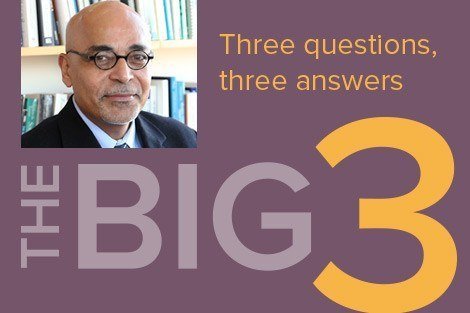January 28, 2014 — K. “Vish” Viswanath, professor of health communication at Harvard School of Public Health (HSPH), is interested in finding better ways to communicate health information to lower-income individuals. He answers three questions about a recent study he co-authored that analyzed how the poor use the Internet when they are provided with access — the first randomized controlled trial to examine this issue.
Q: Everyone seems to be walking around with a smartphone these days. Is accessing the Internet still a problem?
A: Our study offers a correction to the idea that everyone uses the Internet. There is not sufficient data, especially about the poor, to make any broad generalizations about who is still not able to access the Internet, but it is reasonable to say that the “digital divide” is economic. Some recent studies take race and ethnicity out of the equation, but that does not make sense. In our country race and class are closely linked.
We have found that even when the poor can afford to buy a computer or a smartphone, they often cannot afford to pay the monthly bill to keep the connection. They go on and off the grid quite a bit. Even during our study when we were paying the Internet bill, they were losing their connection because they did not pay the cable or telephone bill that was bundled with it. So we had to intervene and make sure that the Internet was not cut off. I think we should take very seriously the idea of subsidizing Internet access for low-income people.
Q: When they are online, what challenges do low-income people face in trying to find health information?
A: Very little data exist on the browsing patterns of the poor, so websites are not designed to accommodate their needs. Usability is a significant challenge for many low income people. A website’s language may be too technical or its structure too complicated. Even the website we created as a landing page for the study participants was too confusing. When we did usability testing, they told us that there were too many panels and navigation bars. “Make it simple for us,” they said.
The most popular health-related sites they accessed were local hospitals. These sites provide patient information portals, where you can email your physician, make appointments, refill prescriptions, and connect to health information from other sources curated by the hospital.
Q: What do those who want to reach low-income people with health messages need to know?
A: I disagree when people characterize the poor as a hard-to-reach population. My argument is that they are hardly reached. We give up too easily, and consequently most studies do not include low-income people in sufficient numbers. Our study showed that it is possible to recruit and retain the poor if you make significant personal contacts—in our case, an average of 8-12 contacts with a participant for the baseline survey and 12-16 contacts to do the post-test survey.
Prior relationships and trust are key to reaching this population. Health messages could be promoted through the websites of organizations that are familiar to them such as local hospitals and community health centers. But these sites must be convenient and comfortable for them to use.
The poor like to go to websites that encourage user participation and engagement—so-called social media, so any attempt to reach them with information should harness these platforms. Companies that manufacture unhealthy foods and tobacco are already doing that.
